Subtotal: £25.16
Brochis Splendens Short-Bodied Catfish, Sailf Corydoras Catfish 3-4 Cm, Thriving Algae Eaters for Efficient Aquarium Maintenance, Perfect for Beginners and Experienced Fish Keepers
£15.99 Original price was: £15.99.£13.55Current price is: £13.55.
Welcome these beautiful Brochis Splendens Short-Bodied Catfish, also known as Sailf Corydoras Catfish, into your aquarium. Their vibrant colors and graceful movements enhance community tanks, making them perfect for beginners and experienced fish keepers alike. Ideal for efficient aquarium maintenance.
996 in stock
Species Introduction
The Brochis Splendens, commonly known as the Sailf Corydoras Catfish, is a delightful addition to any freshwater aquarium. This species hails from the rivers and streams of South America, particularly in regions like the Amazon basin. These beautiful catfish are characterized by their short, robust bodies and vibrant colors, making them a favorite among both beginner and experienced aquarists. They thrive in schools, displaying a peaceful demeanor that contributes to their reputation as ideal community fish. The Brochis Splendens can grow up to 4 cm in length, making them a manageable size for various tank setups. Their natural habitat consists of soft, sandy substrates with plenty of hiding spots provided by aquatic plants and driftwood. This environment not only offers security but also mimics their natural surroundings, promoting their well-being and reducing stress.
Care Requirements Dashboard
Essential Care Guide for Your Brochis Splendens Short-Bodied Catfish
| Optimal Living Conditions | |
|---|---|
| Water Temperature | 22-28°C (72-82°F) |
| pH Level | 6.0-7.5 |
| Water Hardness | 2-15 dKH |
| Minimum Tank Size | 120L (30 gal) |
| Salinity | Freshwater |
| Care Level | Beginner to Intermediate |
✓ Care level: Easy
Tank Size: Minimum 60 liters (15 gallons)
Water Parameters: pH 6.0-7.5, Temperature 22-28°C (72-82°F), Hardness 2-15 dGH
Caring for Brochis Splendens is relatively straightforward, making them suitable for beginners. They prefer a well-maintained tank with stable water parameters. A minimum tank size of 60 liters (15 gallons) is recommended to provide ample swimming space for these bottom-dwelling fish. The water should be slightly acidic to neutral, with a pH range of 6.0 to 7.5, and a temperature between 22 to 28°C (72 to 82°F). Regular water changes and filtration are essential to maintain good water quality, ensuring a healthy environment for your aquatic companions.
Natural Behavior & Temperament
Brochis Splendens are known for their peaceful nature and social behavior. They are schooling fish, which means they thrive in groups of at least five or more. In a well-planted aquarium, they will often be seen foraging for food along the substrate, displaying their natural bottom-dwelling tendencies. These fish exhibit a calm demeanor, making them excellent tank mates for a variety of community fish. Their playful antics and interactions with one another can be quite entertaining, providing a lively atmosphere in your aquarium. Observing their interactions can enhance your appreciation for these beautiful creatures, as they engage in gentle social behaviors and occasionally display their vibrant colors during feeding times.
Tank Setup Guide
Creating an ideal environment for your Brochis Splendens involves considering their natural habitat. A sandy substrate is recommended, as it allows them to dig and forage without injuring themselves. Incorporating plenty of hiding spots, such as driftwood, caves, and dense plants, will help them feel secure. Live plants not only enhance the aesthetic appeal of the aquarium but also provide essential cover and contribute to water quality. It’s important to ensure that the tank has gentle water flow, as these fish prefer calm waters. Additionally, using a sponge filter can help maintain water quality while providing a safe environment for fry and smaller tank mates. Regularly rearranging decorations can also stimulate their curiosity and keep their environment engaging.
Water Quality Management
✓ Good water quality is crucial
pH: 6.0-7.5
Temperature: 22-28°C (72-82°F)
Hardness: 2-15 dGH
Maintaining water quality is vital for the health of your Brochis Splendens. Regular water testing should be conducted to monitor pH, temperature, and hardness levels. A pH level between 6.0 and 7.5 is ideal, and the water temperature should be kept between 22°C to 28°C (72°F to 82°F). It’s also important to ensure that the water hardness is within the range of 2 to 15 dGH. Performing regular water changes, approximately 25% weekly, can help in maintaining these parameters and ensuring a stable environment. Additionally, using a high-quality water conditioner can assist in removing harmful chemicals from tap water, providing a safe habitat for your fish friends.
Feeding & Nutrition
✓ Balanced diet for optimal health
Diet: Omnivorous
Feeding Schedule: 2-3 times daily
Food Types: Sinking pellets, flakes, frozen foods
Brochis Splendens are omnivorous and require a balanced diet to thrive. Their diet should consist of high-quality sinking pellets, flakes, and occasional frozen or live foods such as brine shrimp or bloodworms. It is recommended to feed them 2-3 times daily, providing only as much food as they can consume within a few minutes. This feeding strategy helps prevent overfeeding and maintains water quality. It’s important to vary their diet to ensure they receive all the necessary nutrients for optimal health and vibrant coloration. Observing their feeding habits can also provide insight into their well-being; healthy fish will actively search for food and display vibrant colors.
Compatibility Guide
✓ Peaceful community fish
Compatible Tank Mates: Tetras, Rasboras, Guppies, other Corydoras species
Brochis Splendens are known for their peaceful temperament, making them excellent tank mates for a variety of community fish. They can coexist harmoniously with other peaceful species such as tetras, rasboras, and guppies. When selecting tank mates, it is essential to avoid aggressive or territorial species that may stress these gentle catfish. Additionally, keeping them in groups of five or more enhances their social behavior and reduces stress levels. Observing their interactions with other fish can provide insights into their compatibility and ensure a harmonious aquarium environment.
Tank Mate Compatibility Guide
Great Tank Mates
- Other peaceful community fish
- Corydoras catfish
- Small tetras
- Peaceful dwarf shrimp
Avoid These Tank Mates
- Aggressive cichlids
- Large predatory fish
- Fin nippers
Compatibility Note: Always research specific species requirements and observe fish behavior when introducing new tank mates. Individual fish personalities can vary!
Health & Wellness
✓ Regular health checks are essential
Common Issues: Ich, fin rot, stress-related diseases
Maintaining the health and wellness of your Brochis Splendens is crucial for their longevity. Regular health checks should include observing their behavior, appetite, and physical appearance. Common issues include ich, fin rot, and stress-related diseases. Signs of illness may include lethargy, loss of appetite, or visible lesions. To prevent these issues, ensure stable water parameters, provide a balanced diet, and avoid overcrowding in the tank. Quarantining new fish before introducing them to the main tank can also help prevent the spread of disease. If any health concerns arise, consulting with an aquatic veterinarian or an experienced aquarist is recommended for appropriate treatment options.
Breeding Information
Breeding Brochis Splendens can be a rewarding experience for aquarists. To encourage breeding, it is essential to provide optimal conditions, including a well-maintained tank with stable water parameters and plenty of hiding spots. The breeding process typically involves the female laying eggs on flat surfaces, such as leaves or glass, which the male then fertilizes. Once the eggs are laid, it is advisable to remove the parents from the breeding tank to prevent them from eating the eggs. The eggs will usually hatch within 3-5 days, and the fry will require infusoria or finely crushed flakes until they are large enough to consume regular food. Monitoring the fry’s growth and ensuring they have adequate space and food is crucial for their development.
Acclimation Process
When introducing Brochis Splendens to a new tank, the acclimation process is vital to ensure their health and reduce stress. Begin by floating the sealed bag containing the fish in the aquarium for about 15-20 minutes to equalize the temperature. After that, gradually introduce small amounts of tank water into the bag over the next hour. This process helps the fish adapt to the new water parameters. Once acclimated, gently release the fish into the tank using a net to avoid adding any transport water. Monitoring their behavior for the first few days is essential to ensure they are adjusting well to their new environment.
Long-term Care
Providing long-term care for your Brochis Splendens involves maintaining stable water conditions and a balanced diet throughout their lifespan. These catfish can live for several years with proper care, and their growth should be monitored regularly. As they mature, it’s essential to ensure that their tank mates remain compatible and that the tank size is adequate for their needs. Regular health checks and water quality management will contribute to their longevity and overall well-being. Additionally, engaging with your fish friends through feeding and observation can enhance your experience as an aquarist, allowing you to appreciate their natural behaviors and beauty.
Natural Habitat Recreation
Recreating the natural habitat of Brochis Splendens in your aquarium can significantly enhance their well-being. This involves replicating the soft, sandy substrates and incorporating live plants that mimic their native environment. Adding driftwood and rocks can provide hiding spots, while ensuring that the tank has gentle water flow will help them feel secure. Utilizing a variety of plants not only improves the aesthetic appeal of the aquarium but also creates a more dynamic environment for the fish. Regularly changing the layout and introducing new decorations can stimulate their curiosity and encourage natural behaviors, contributing to a thriving aquatic ecosystem.
Seasonal Care Adjustments
Seasonal changes can affect the water parameters in your aquarium, and it is essential to make adjustments accordingly. During warmer months, ensure that the water temperature does not exceed 28°C (82°F) to prevent stress on your Brochis Splendens. Additionally, monitor for evaporation and replenish the water as needed. In cooler months, maintaining a consistent temperature is crucial, and using a heater may be necessary. Adjusting the lighting duration can also impact plant growth and fish behavior, so consider seasonal variations in your aquarium care routine to provide the best environment for your aquatic companions.
Expert Tips
For those looking to enhance their experience with Brochis Splendens, consider the following expert tips: 1) Maintain a consistent feeding schedule to promote healthy growth and activity levels. 2) Regularly test water parameters to ensure optimal conditions. 3) Introduce new tank mates gradually to minimize stress. 4) Observe their behavior closely to identify any signs of illness early. 5) Engage with your fish friends by providing a varied diet and stimulating environment. By following these tips, you can create a thriving community tank that showcases the beauty and charm of these wonderful catfish.
Troubleshooting
If you encounter any issues with your Brochis Splendens, it’s essential to address them promptly. Common problems may include signs of stress, such as hiding or decreased appetite. If you notice these behaviors, check the water parameters immediately and ensure they are within the recommended ranges. Additionally, observe for any signs of disease, such as white spots or frayed fins, and consult with an aquatic veterinarian if necessary. Maintaining a clean and stable environment is key to preventing many common issues, so regular water changes and monitoring are vital for the health of your fish friends.
Scientific Background
The Brochis Splendens belongs to the family Callichthyidae, which encompasses a variety of catfish species known for their armored bodies and peaceful nature. While specific scientific data regarding their classification may be limited, they are widely recognized for their adaptability to various freshwater environments. Research into their natural habitats has revealed their preference for slow-moving waters rich in vegetation, highlighting the importance of replicating these conditions in captivity. Conservation efforts are crucial for preserving their natural habitats, as pollution and habitat destruction pose significant threats to their populations in the wild.
Advanced Care Techniques
For experienced aquarists looking to provide the best care for Brochis Splendens, consider implementing advanced techniques such as breeding programs or biotope aquariums. Creating a biotope that closely resembles their natural habitat can enhance their well-being and promote natural behaviors. Additionally, experimenting with different feeding strategies, such as live or frozen foods, can improve their health and coloration. Monitoring their growth and adjusting tank conditions as they mature will ensure that they continue to thrive in your care. Engaging with the broader aquarist community can also provide valuable insights and tips for enhancing the care of these beautiful fish.
Frequently Asked Questions
Q: What tank size is required for Brochis Splendens?
For Brochis Splendens, a tank of at least 60 litres (15 gallons) is recommended. These fish thrive in groups, so a larger tank size allows for their social behaviour. A spacious environment ensures they have ample room to swim and explore. Additionally, a well-planted aquarium with hiding spots will help replicate their natural habitat, promoting their overall well-being. Ensure the tank has a secure lid, as these catfish are known to be jumpers.
✓ Expert Tip
Consider a tank with a sandy substrate to mimic their natural riverbed environment, which will also prevent any damage to their delicate barbels.
Q: What water parameters do Brochis Splendens require?
Brochis Splendens prefer soft to moderately hard water with a pH between 6.0 and 7.5. The ideal temperature range is 22-26°C (72-79°F). Regular water changes, approximately 20-30% weekly, help maintain stable water conditions and enhance their health. Utilising a good quality water conditioner will also aid in removing harmful chemicals. Monitoring parameters with reliable test kits will ensure optimal living conditions for your fish friends.
✓ Expert Tip
Use a substrate that allows for good filtration and aeration, as these fish appreciate clean water and a well-maintained environment.
Q: How often should I feed Brochis Splendens?
Brochis Splendens should be fed small amounts two to three times a day. They are omnivorous and will thrive on a varied diet including high-quality sinking pellets, frozen or live foods such as bloodworms, and blanched vegetables like courgette or spinach. Feeding smaller quantities ensures they are not overfed, which can lead to poor water quality. Observing their eating habits will help determine the right amount to provide.
✓ Expert Tip
Introduce new foods gradually to avoid digestive issues, and ensure any uneaten food is promptly removed to maintain water quality.
Q: What are the best tank mates for Brochis Splendens?
Brochis Splendens are peaceful and can coexist with a variety of community fish. Ideal tank mates include tetras, rasboras, and other small to medium-sized non-aggressive fish. Avoid aggressive species such as cichlids, as they may bully these gentle catfish. Maintaining a well-planted aquarium with hiding spots promotes a harmonious environment, allowing all fish to feel secure and reducing stress.
✓ Expert Tip
Always introduce new tank mates gradually to avoid territorial disputes, and monitor interactions closely for any signs of stress.
Q: How do I properly acclimatise Brochis Splendens to my aquarium?
Acclimatising Brochis Splendens is crucial for their health. Begin by floating the sealed bag in your aquarium for about 15-20 minutes to equalise the temperature. Next, gradually introduce small amounts of aquarium water into the bag every 5-10 minutes over the course of an hour. This helps them adjust to the new water parameters. After acclimatisation, gently release them into the tank using a net to avoid introducing bag water, which may contain harmful substances.
✓ Expert Tip
Avoid exposing them to air for prolonged periods during the transfer, as this can cause stress and harm.
Q: What are the signs of healthy Brochis Splendens?
Healthy Brochis Splendens exhibit vibrant colours, active swimming behaviour, and a healthy appetite. Their bodies should be free of lesions or discoloration, and they should display sociable behaviour with their tank mates. Regularly observe your fish to spot any changes in behaviour or appearance, as these can indicate stress or illness. Maintaining clean water and a stable environment will further enhance their health and longevity.
✓ Expert Tip
Monitor their eating habits; a sudden loss of appetite can be an early warning sign of health issues.
Q: How do I successfully breed Brochis Splendens?
Breeding Brochis Splendens can be a rewarding experience. To encourage spawning, provide a separate breeding tank with soft, slightly acidic water. Introduce a ratio of one male to two or three females. Ensure the tank has fine-leaved plants or spawning mops for egg laying. After spawning, remove the adults to prevent them from eating the eggs. The eggs will hatch within a few days, and the fry can be fed infusoria or finely crushed flakes until they grow larger.
✓ Expert Tip
Maintain stable water conditions during breeding to increase the chances of successful hatching and fry survival.
Q: What temperature should I maintain for Brochis Splendens?
Maintaining a stable temperature between 22-26°C (72-79°F) is crucial for the health of Brochis Splendens. Sudden temperature fluctuations can stress these gentle fish, leading to health issues. Using a reliable aquarium heater with a thermometer will help ensure consistent temperatures. Regular monitoring is recommended, particularly during seasonal changes, to maintain their optimal living conditions.
✓ Expert Tip
Consider using a heater with an adjustable thermostat for greater control over water temperature.
Q: How long do Brochis Splendens typically live in captivity?
In captivity, Brochis Splendens can live for approximately 5 to 10 years, provided they are cared for in optimal conditions. Factors such as water quality, diet, and tank mates significantly influence their lifespan. Regular maintenance and a balanced diet are essential for keeping them healthy and thriving. Observing their behaviour and appearance will also help to catch any potential health issues early.
✓ Expert Tip
Providing a stress-free environment with compatible tank mates can significantly enhance their quality of life and longevity.
Q: What type of substrate is most suitable for Brochis Splendens?
A soft, sandy substrate is ideal for Brochis Splendens, as it mimics their natural habitat and protects their sensitive barbels. Sharp or coarse substrates can cause injury, so it is best to avoid them. Additionally, a sandy substrate allows for natural foraging behaviour, which is essential for their diet. Layering fine gravel can also be a good alternative, provided it is smooth and not abrasive.
✓ Expert Tip
Adding aquatic plants can enhance the aesthetic and provide hiding spots, which will help reduce stress for these shy fish.
Q: What behavioural patterns should I expect from Brochis Splendens?
Brochis Splendens are known for their active and social behaviour. They enjoy swimming in groups and often engage in playful interactions. These catfish are bottom dwellers, spending much of their time foraging for food amongst the substrate. They may also exhibit a charming behaviour of ‘corydoras dance’, where they swim up to the surface and back down. Observing their interactions can provide insight into their health and happiness.
✓ Expert Tip
Providing a group of at least five will promote their natural behaviour and enhance their overall well-being.
Q: How can I prevent common diseases in Brochis Splendens?
Preventing diseases in Brochis Splendens largely revolves around maintaining excellent water quality and a stress-free environment. Regular water changes, proper filtration, and a balanced diet are key factors. Quarantining new fish before introducing them to your main aquarium can also help prevent the spread of diseases. Observing your fish for any signs of sickness, such as lethargy or changes in appetite, allows for early intervention if problems arise.
✓ Expert Tip
Consider adding aquarium salt to the water in moderation, as it can help prevent certain diseases and improve overall fish health.
Q: What lighting conditions do Brochis Splendens prefer?
Brochis Splendens prefer moderate lighting in their aquarium. Bright light can cause stress, so providing shaded areas using plants or decorations can create a comfortable environment. A balance of light and shade mimics their natural habitat, promoting their natural behaviours and reducing stress. Using LED lights with adjustable settings can help achieve the desired lighting conditions.
✓ Expert Tip
Consider a timer for your aquarium lighting to maintain a consistent day/night cycle, which is beneficial for their overall health.
Q: How do I recognise stress in Brochis Splendens?
Signs of stress in Brochis Splendens include hiding excessively, loss of appetite, and erratic swimming behaviour. They may also exhibit rapid gill movement or clamped fins. Addressing the root cause of stress, such as poor water quality or aggressive tank mates, is essential for their recovery. Regular monitoring of their behaviour and environment will help ensure they remain healthy and happy.
✓ Expert Tip
Create a well-structured environment with plenty of hiding spots to help reduce stress levels and promote a sense of security.
Q: What natural habitat conditions should I replicate for Brochis Splendens?
To replicate the natural habitat of Brochis Splendens, aim for a well-planted aquarium with plenty of hiding spots. They inhabit slow-moving rivers with sandy substrates, so consider using fine sand or smooth gravel. Incorporating driftwood and leaf litter will create a more natural environment. Additionally, maintaining clean, well-oxygenated water with a slightly acidic pH will help mimic their native conditions and promote their health.
✓ Expert Tip
Using a substrate that allows for natural foraging will encourage their natural behaviours and enhance their overall well-being.


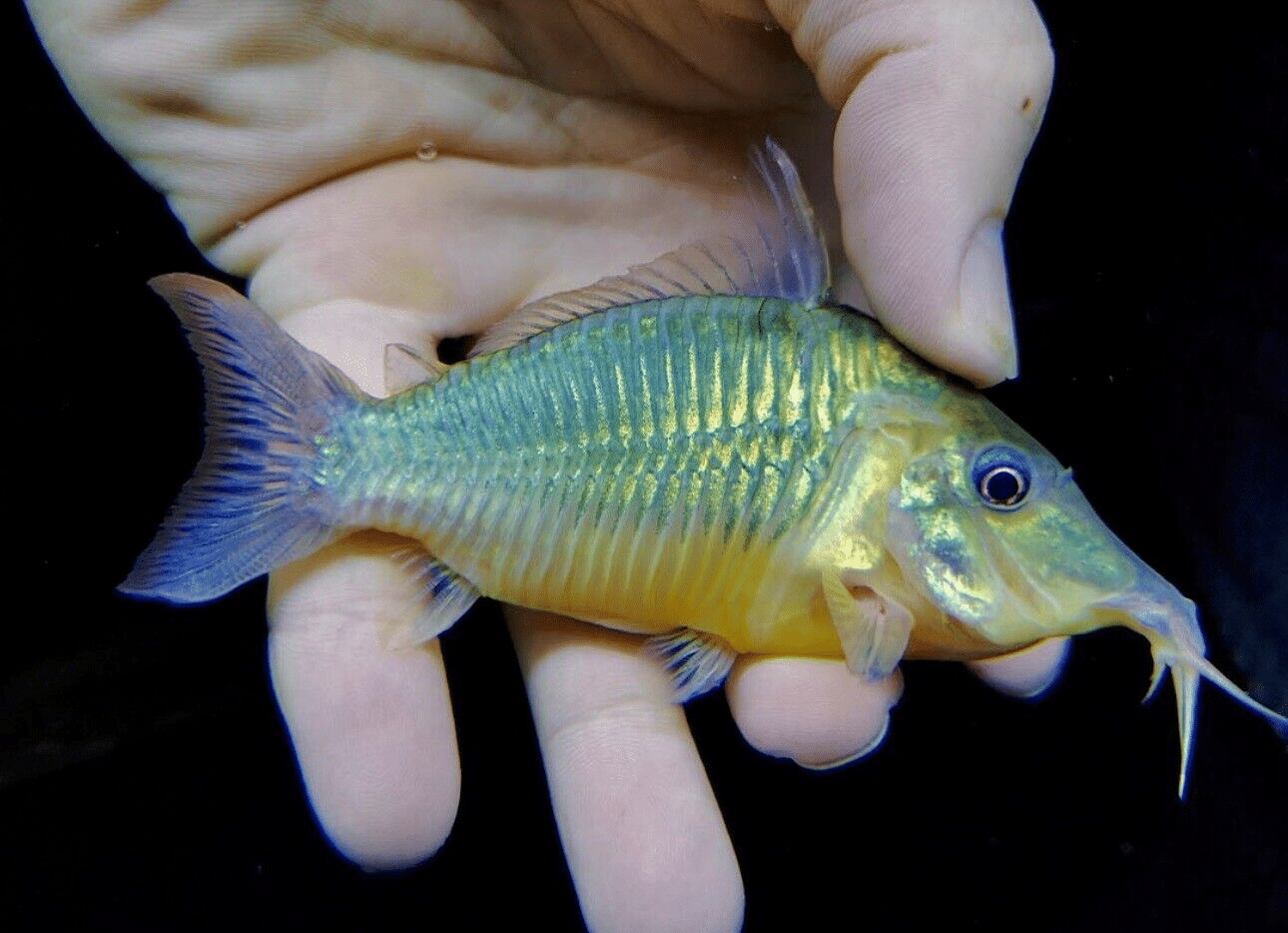
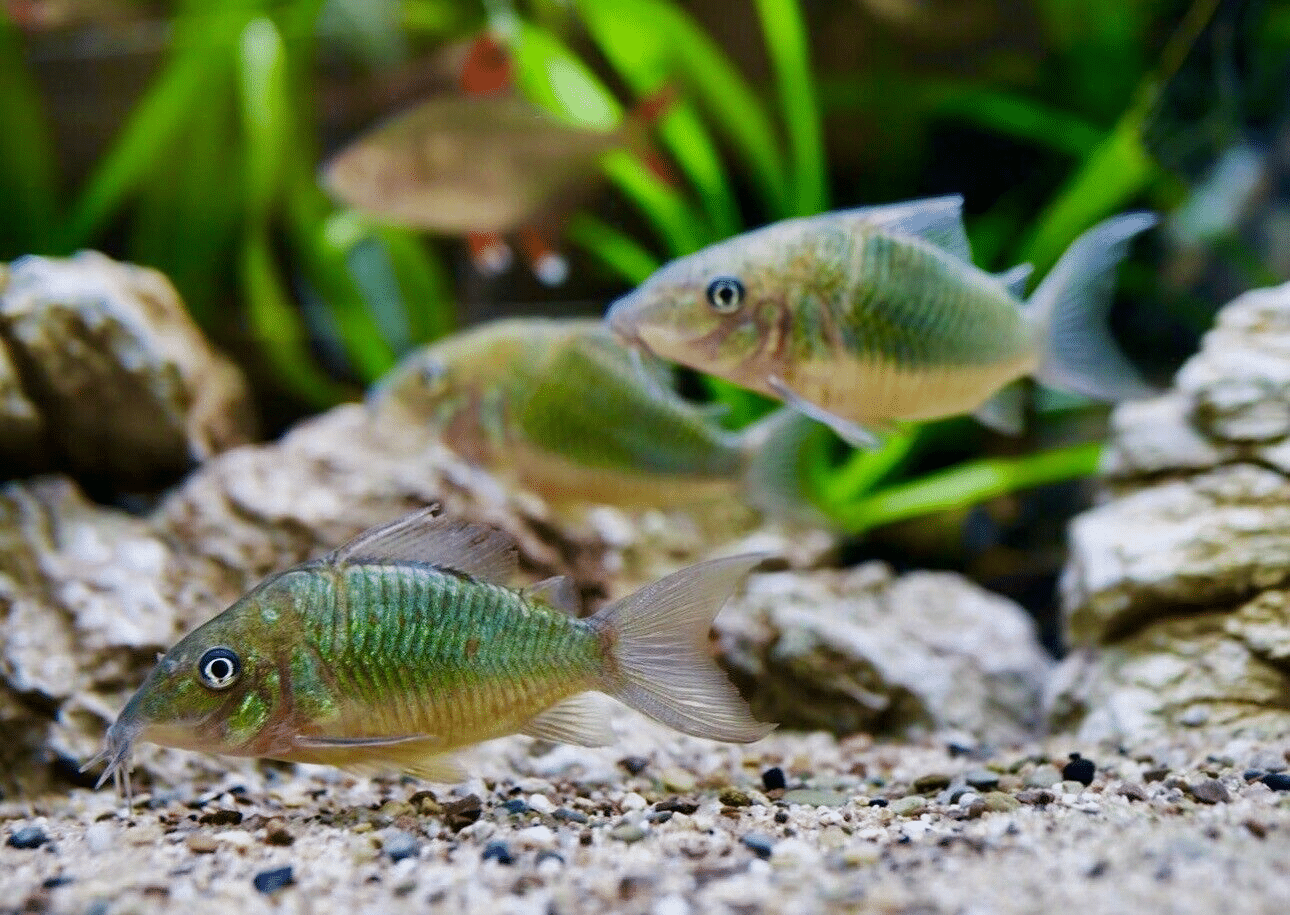
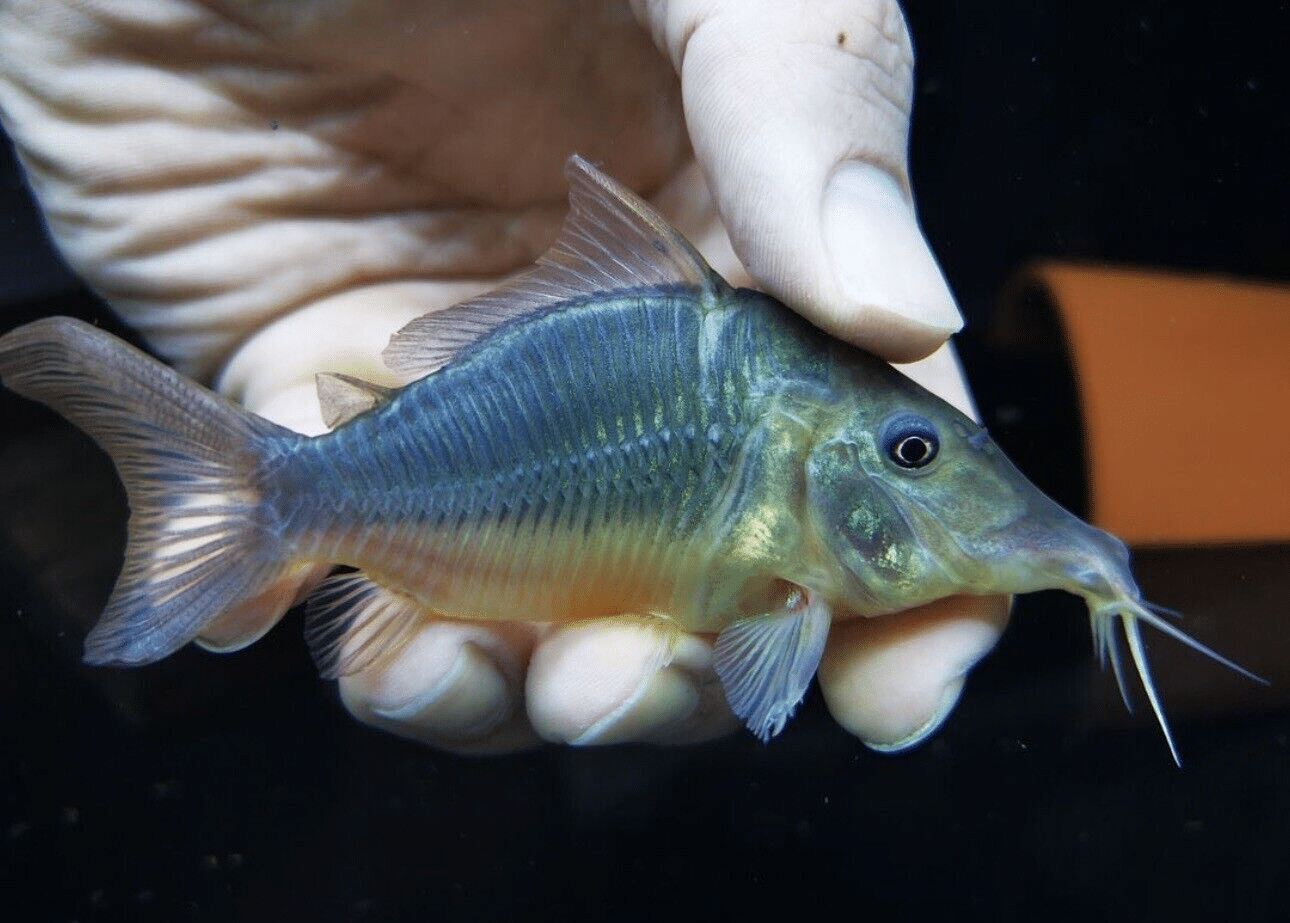
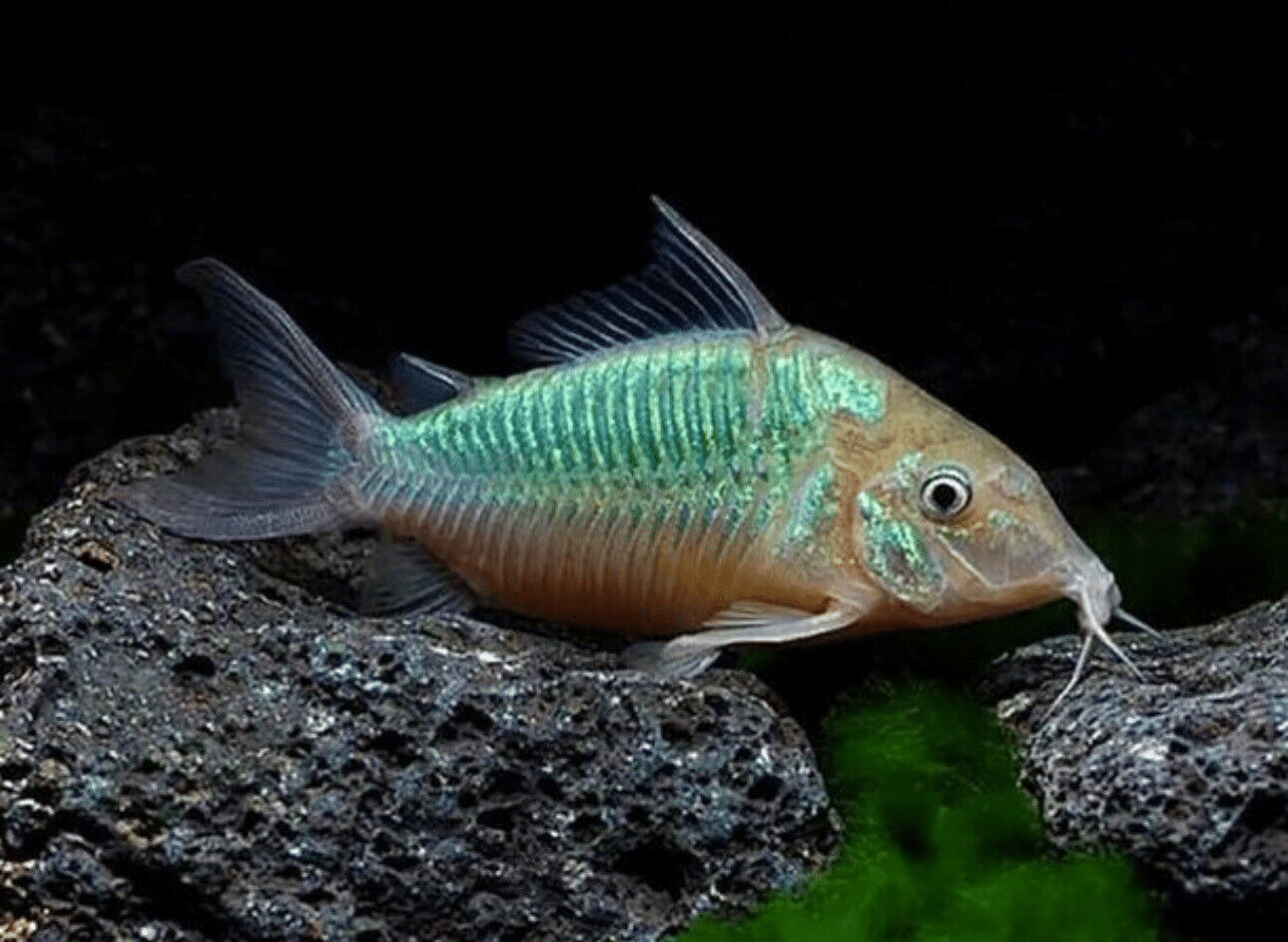

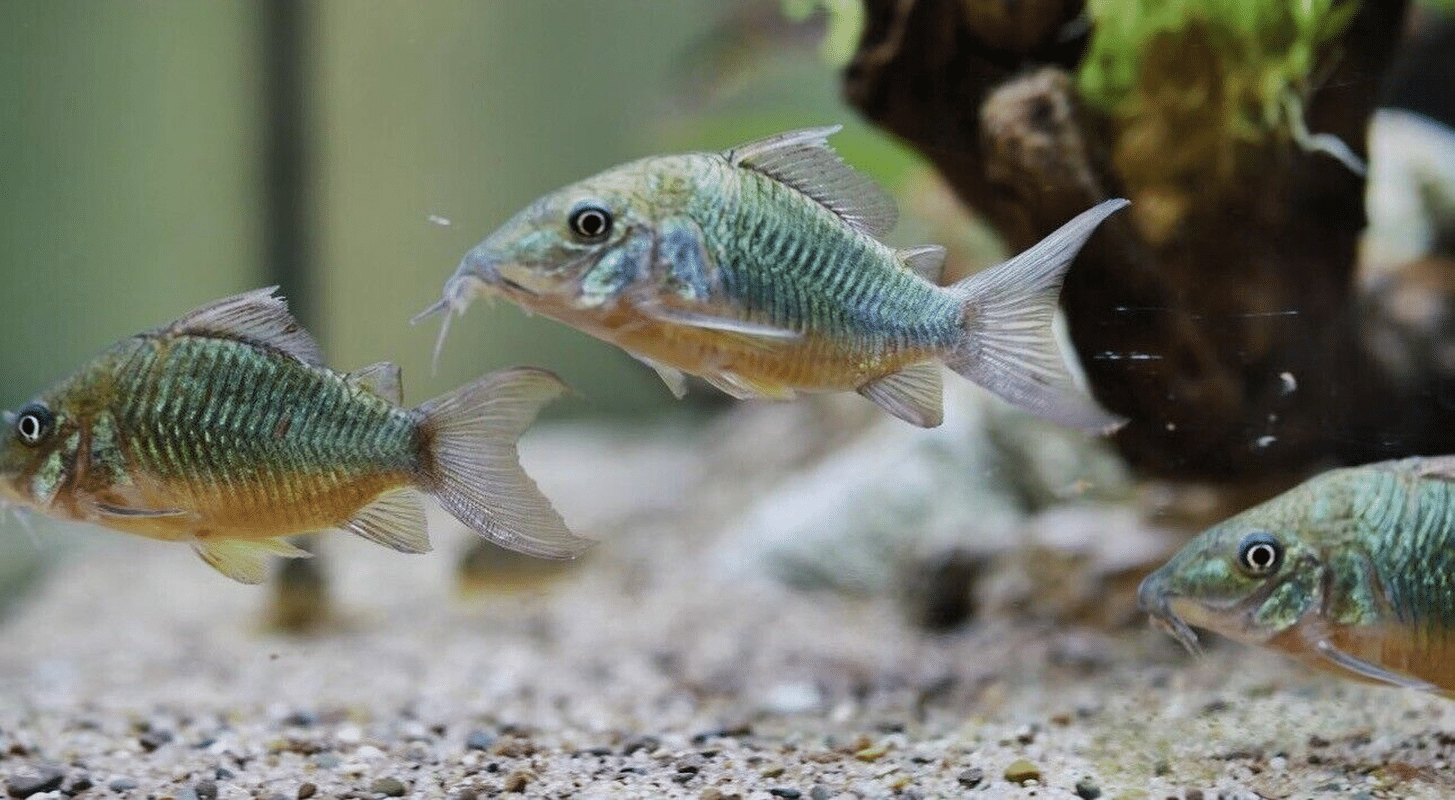
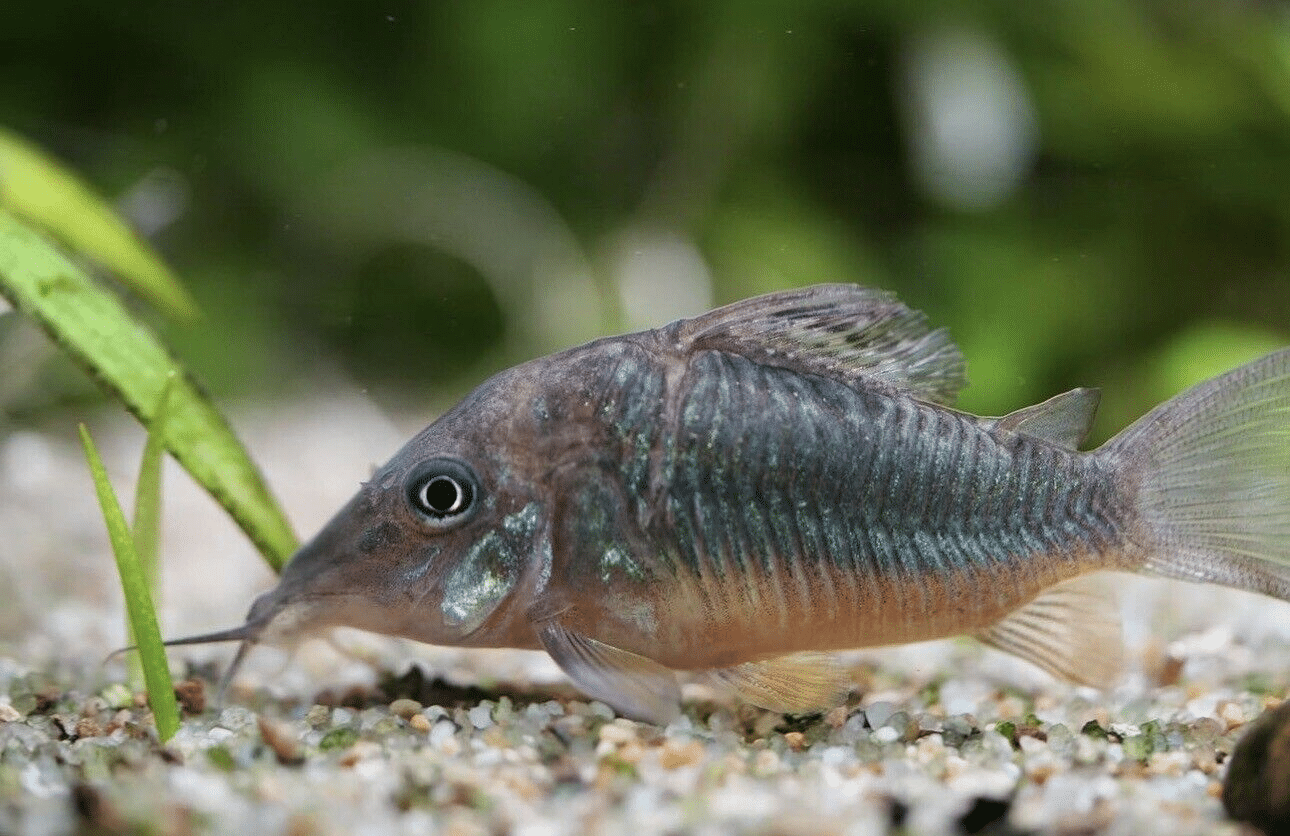
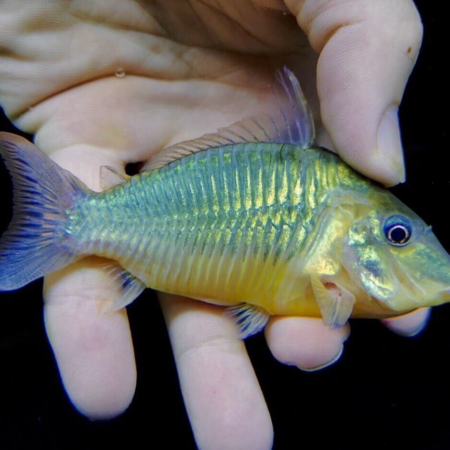
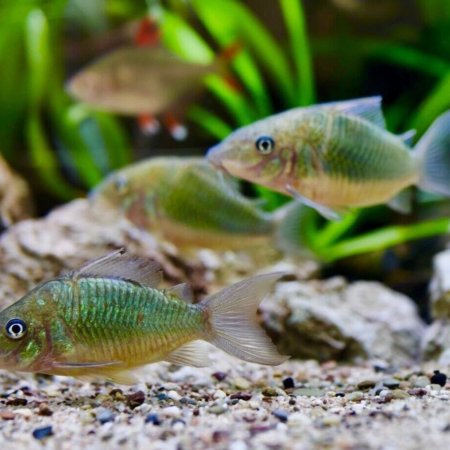

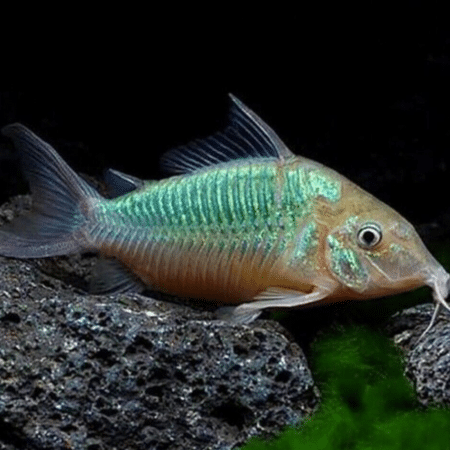

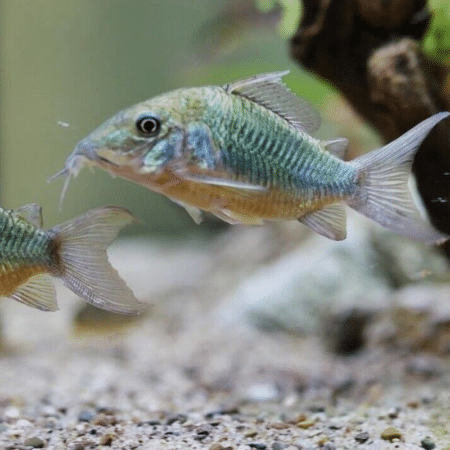
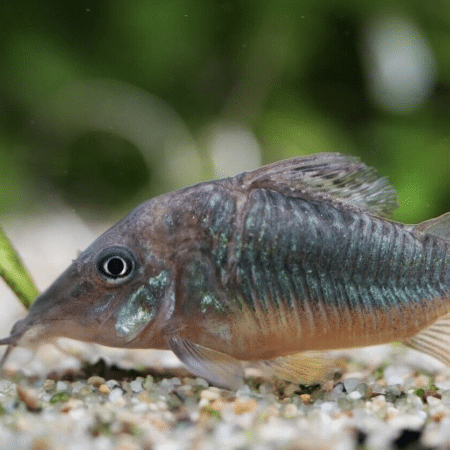












Emily Carter (verified owner) –
I recently added the Brochis Splendens Short-Bodied Catfish to my aquarium, and I couldn’t be happier! These little guys, about 3-4 cm each, have brought such personality and charm to my tank. I love how they glide gracefully along the substrate, sifting through the sand as they hunt for food and algae. Their natural behavior is captivating to watch, and they’re a fantastic addition to my tropical fish setup.
After about two weeks, I noticed a significant reduction in algae buildup, which is a huge plus for aquarium maintenance. Compared to other bottom feeders like the standard Corydoras, these short-bodied catfish are a lot more active, making them much more enjoyable to observe.
One thing to note is that they prefer a well-planted environment, so make sure to provide some cover with plants or decorations. Overall, I highly recommend these fish for beginner or experienced aquarists alike who are looking for vibrant, engaging algae eaters. It really feels good to add fish that not only thrive but also contribute positively to the tank’s ecosystem. I wouldn’t hesitate to buy them again!
Emily Carter (verified owner) –
I recently added the Brochis Splendens Short-Bodied Catfish to my aquarium, and I couldn’t be happier! These little guys are not only adorable but also incredible at keeping the tank clean. After about two months of having them, I’ve noticed a significant reduction in algae, which really helps with aquarium maintenance. I love how they actively scavenge the bottom, making my tank look pristine while thriving in their environment.
I was initially worried about how they’d adapt since I have a community tank, but they integrated smoothly with my other tropical fish. Their playful antics and peaceful nature make them a joy to watch. Compared to other varieties of corydoras I’ve kept, these short-bodied ones seem to have a more vibrant personality, making them perfect for both beginners and experienced fish keepers like myself.
A minor note would be that they prefer a softer substrate to really thrive, but that’s a small price to pay for these amazing algae eaters. Overall, I wholeheartedly recommend them to anyone looking to enhance their aquarium experience—your fish will thank you for it, and so will you!